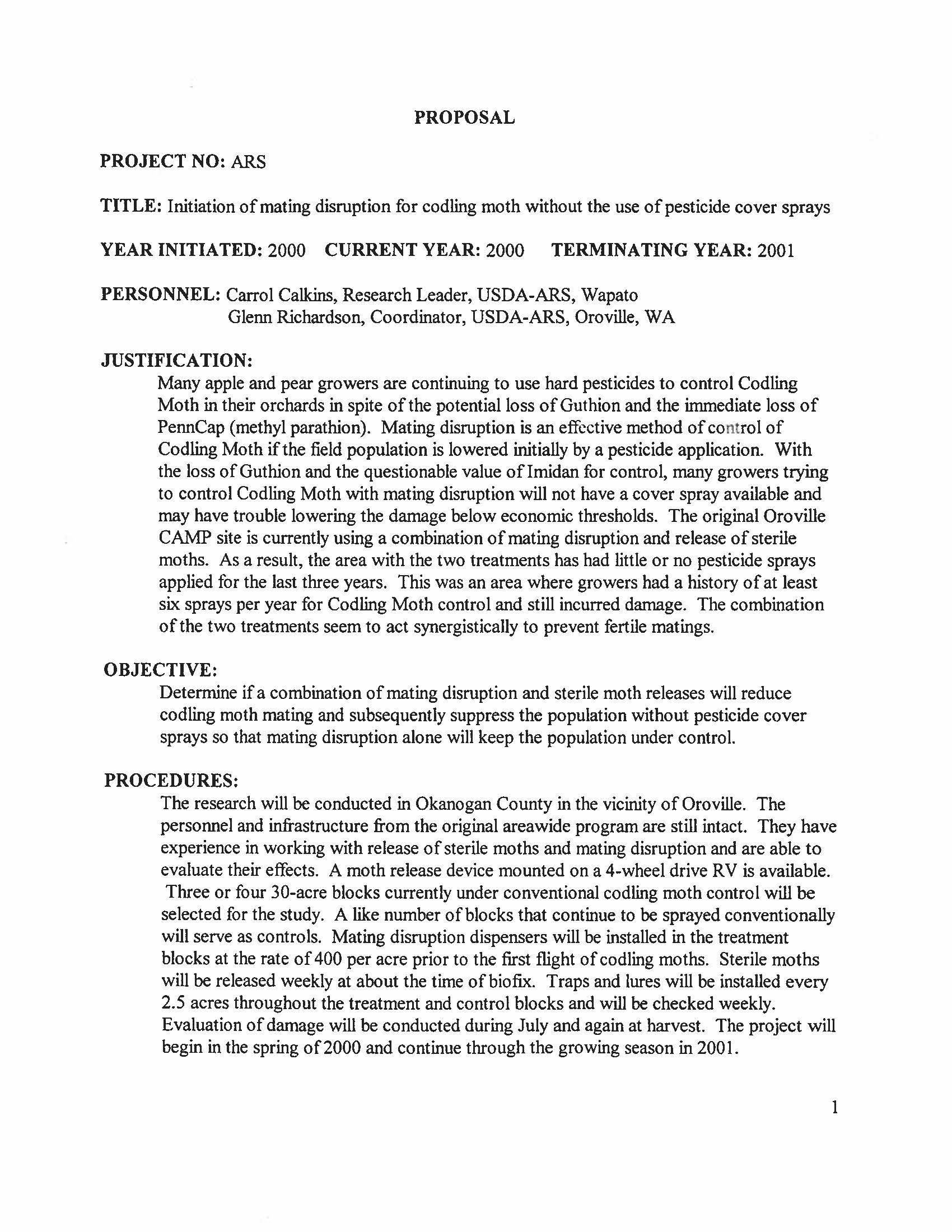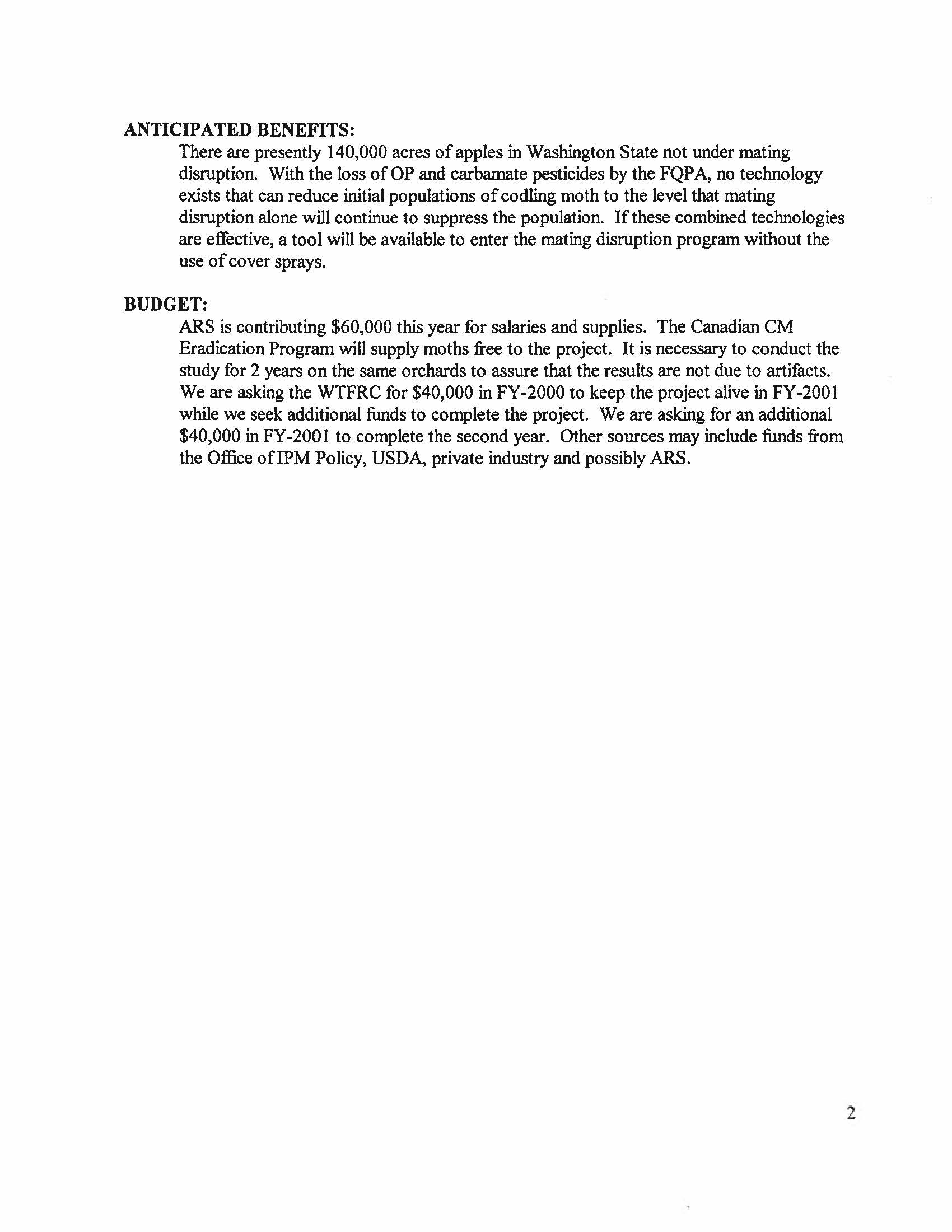Initiation of mating disruption for codling moth without the use of pesticide cover sprays
Author: Carrol Calkins
Published: 2000
Summary: Many apple and pear growers are continuing to use hard pesticides to control Codling Moth in their orchards in spite of the potential loss of Guthion and the immediate loss of PennCap (methyl parathion). Mating disruption is an effective method of control of Codling Moth if the field population is lowered initially by a pesticide application. With the loss ofGuthion and the questionable value oflmidan for control, many growers trying to control Codling Moth with mating disruption will not have a cover spray available and may have trouble lowering the damage below economic thresholds. The original Oroville CAMP site is currently using a combination of mating disruption and release of sterile moths. As a result, the area with the two treatments has had little or no pesticide sprays applied for the last three years. This was an area where growers had a history of at least six sprays per year for Codling Moth control and still incurred damage. The combination of the two treatments seem to act synergistically to prevent fertile matings.
Keywords:


